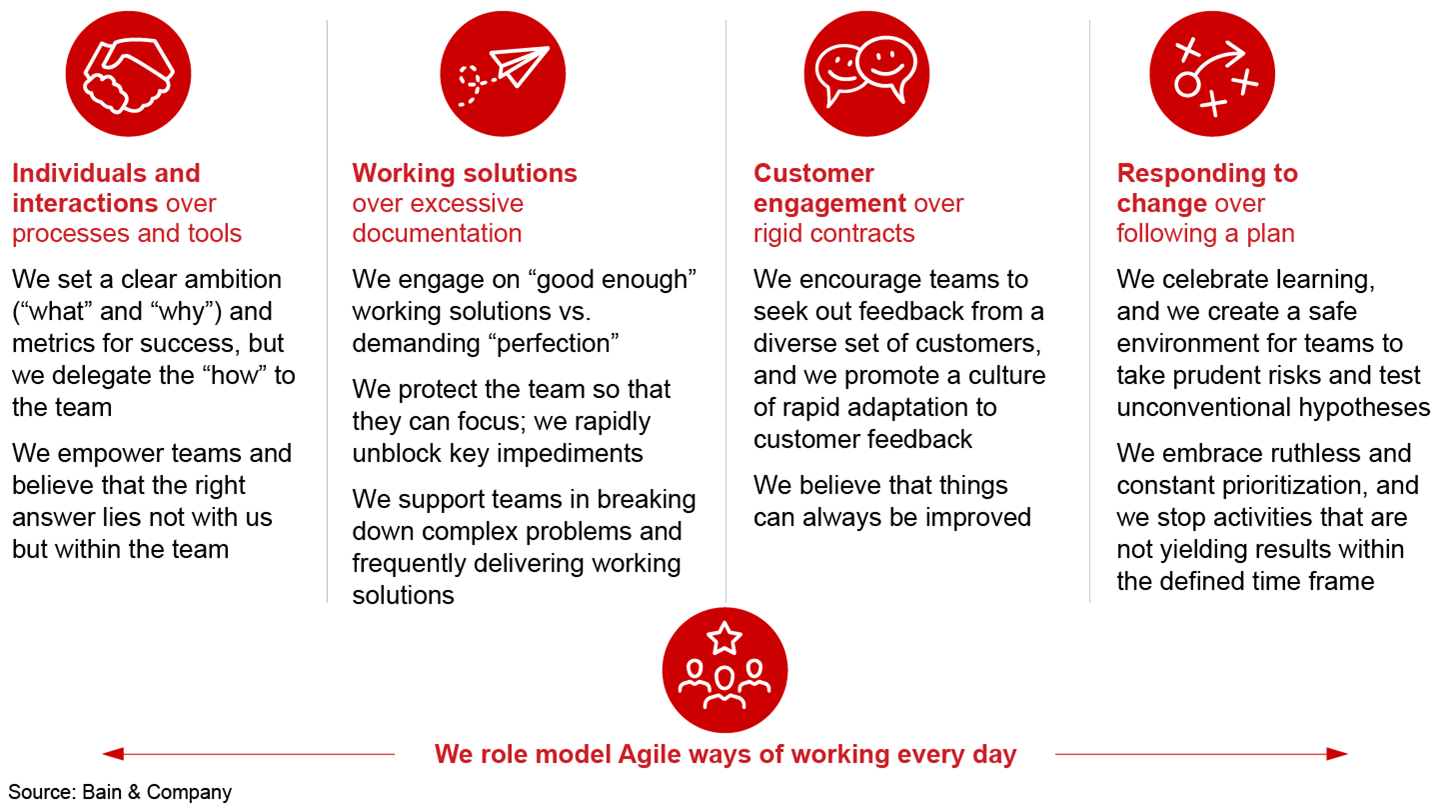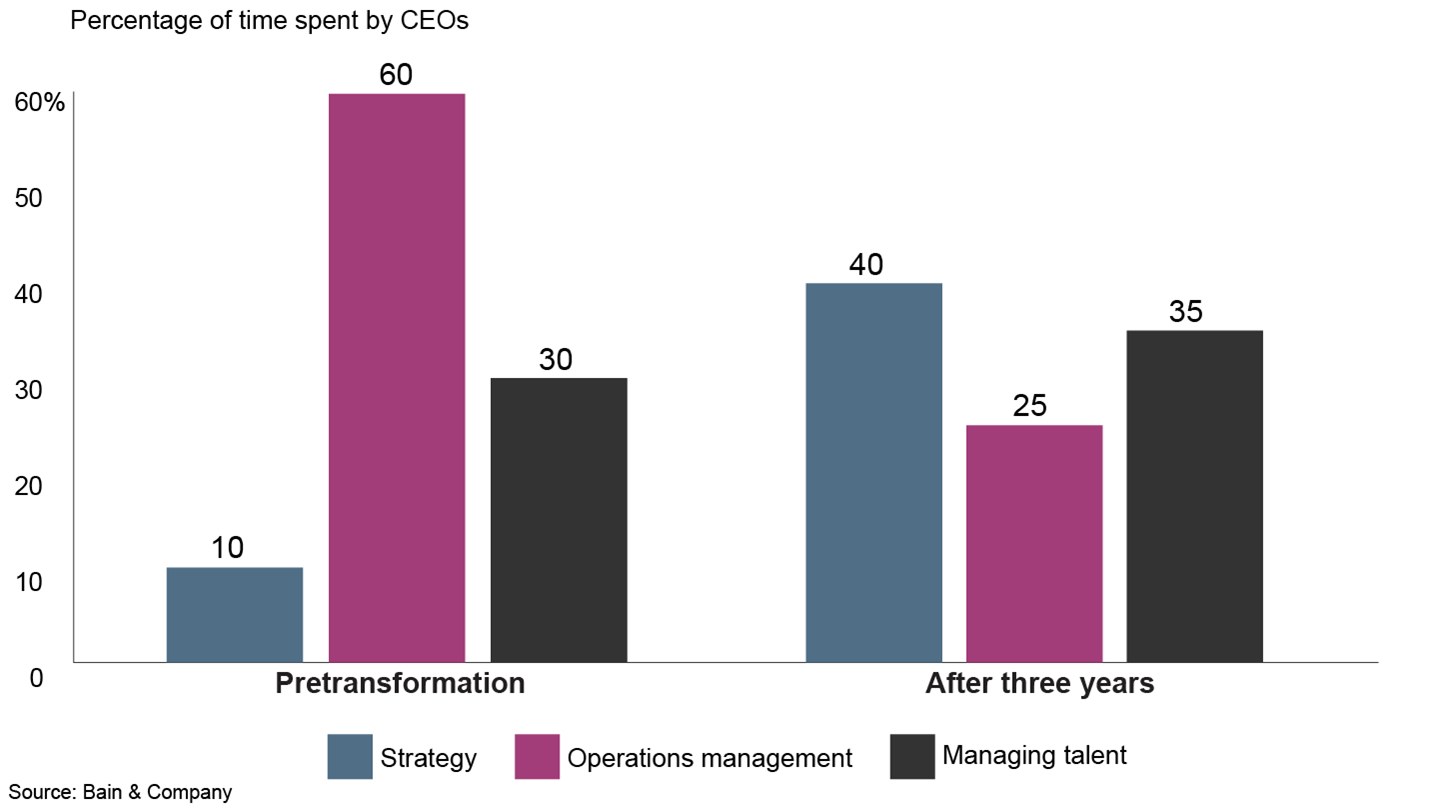About
Agile Leadership
Agile Leadership
The job of an Agile leadership team is to build and operate an Agile enterprise.
About
The job of an Agile leadership team is to build and operate an Agile enterprise.
Ask an Agile team what the greatest barriers are to successfully scaling Agile, and they will most often cite two things: culture and leadership. Most leaders aren’t fighting Agile, however. They just don’t understand how it applies to their role or how they can work differently to enhance agility.
The job of an Agile leadership team is to build and operate an Agile enterprise. Executives must create a carefully balanced system that runs the business efficiently, changes the business effectively and merges the two activities without destroying either one. In the best case, the Agile leadership team views development of the Agile system as itself an Agile initiative—in fact, as the most vital of all Agile initiatives. To guide their behaviors with one another and with their own teams, Agile leadership teams often draft an Agile manifesto (see Figure 1).


Typically, the Agile leadership team includes part or all of a company’s executive committee. At a minimum, it consists of the CEO and the heads of finance, human resources, technology, operations and marketing—the individuals most critical to the components of the operating system.
The process will require characteristics and approaches that those top executives may find uncomfortable and unfamiliar.
They will spend their time differently—less time on operations management and more time on strategy and talent. An hour spent reviewing or second-guessing the work of experienced operating managers creates far less incremental value than an hour invested in tasks senior executives are truly best positioned to tackle—for example, developing major cross-functional innovations (see Figure 2).


Agile also requires humility. Humble leaders recognize the futility of predicting the unpredictable and instead build rapid feedback loops to ensure that initiatives stay on track. They understand that good ideas can come from anyone, not just from those with the highest status. They view their job as helping team members to learn and to take responsibility, rather than telling every team member what to do and how to do it.

A new approach to leadership for the team at the top.
